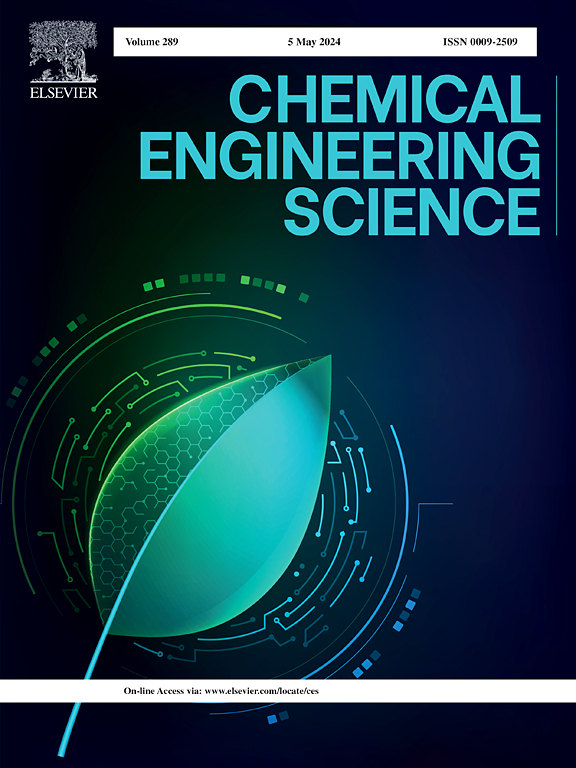场协同理论与过程强化策略相结合的多相反应器设计新方法——在煤热解降床反应器中的应用
IF 4.1
2区 工程技术
Q2 ENGINEERING, CHEMICAL
引用次数: 0
摘要
多相反应器的优化设计在化学工程中具有重要意义。本研究提出了一种现场协同与过程强化相结合的反应器优化设计新方法,并将其应用于低阶煤热解降床的设计。对带旋涡叶喷管降噪器(DSBN)的核心设计参数叶片数(N)、高度(H)、角(θθ)、转数(T)进行了优化。结果表明,优化后的DSBN比传统的侧喷嘴降温器(CSND)获得了更均匀的煤温,提高了65.735 K。DSBN的总反应速率比CSND高13.36 %。这种改善是由于DSBN中物理场之间的协同效应增强。能效和综合性能的最佳参数设置为:N = 8,θθ=90°,H = 100 mm, T = 0.125。灵敏度分析表明,H对阻力和传热影响显著,θθ对综合性能影响最大。本文章由计算机程序翻译,如有差异,请以英文原文为准。

A new design method for multiphase reactors combining field synergy theory with process intensification strategy: Application to downer reactor for coal pyrolysis
Optimizing multiphase reactor design is crucial in chemical engineering. This study introduces a new approach that combines field synergy with process intensification for optimizing reactor design, and apply it to the design of a downer for low-rank coal pyrolysis. The core design parameters of downer with swirling blade nozzle(DSBN), including blade number(N), height(H), angle(), and number of turns(T) were optimized. Results indicate that the optimized DSBN achieves a more uniform coal temperature, which is 65.735 K higher than in a conventional side nozzle downer(CSND). The global reaction rate in DSBN is 13.36 % higher than in CSND. This improvement is attributed to the enhanced synergistic effect between physical fields in the DSBN. The optimal parameter settings for energy efficiency and overall performance are N = 8, =90°, H = 100 mm, T = 0.125. Sensitivity analysis indicates H significantly impacts resistance and heat transfer, while most affects comprehensive performance.
求助全文
通过发布文献求助,成功后即可免费获取论文全文。
去求助
来源期刊

Chemical Engineering Science
工程技术-工程:化工
CiteScore
7.50
自引率
8.50%
发文量
1025
审稿时长
50 days
期刊介绍:
Chemical engineering enables the transformation of natural resources and energy into useful products for society. It draws on and applies natural sciences, mathematics and economics, and has developed fundamental engineering science that underpins the discipline.
Chemical Engineering Science (CES) has been publishing papers on the fundamentals of chemical engineering since 1951. CES is the platform where the most significant advances in the discipline have ever since been published. Chemical Engineering Science has accompanied and sustained chemical engineering through its development into the vibrant and broad scientific discipline it is today.
 求助内容:
求助内容: 应助结果提醒方式:
应助结果提醒方式:


